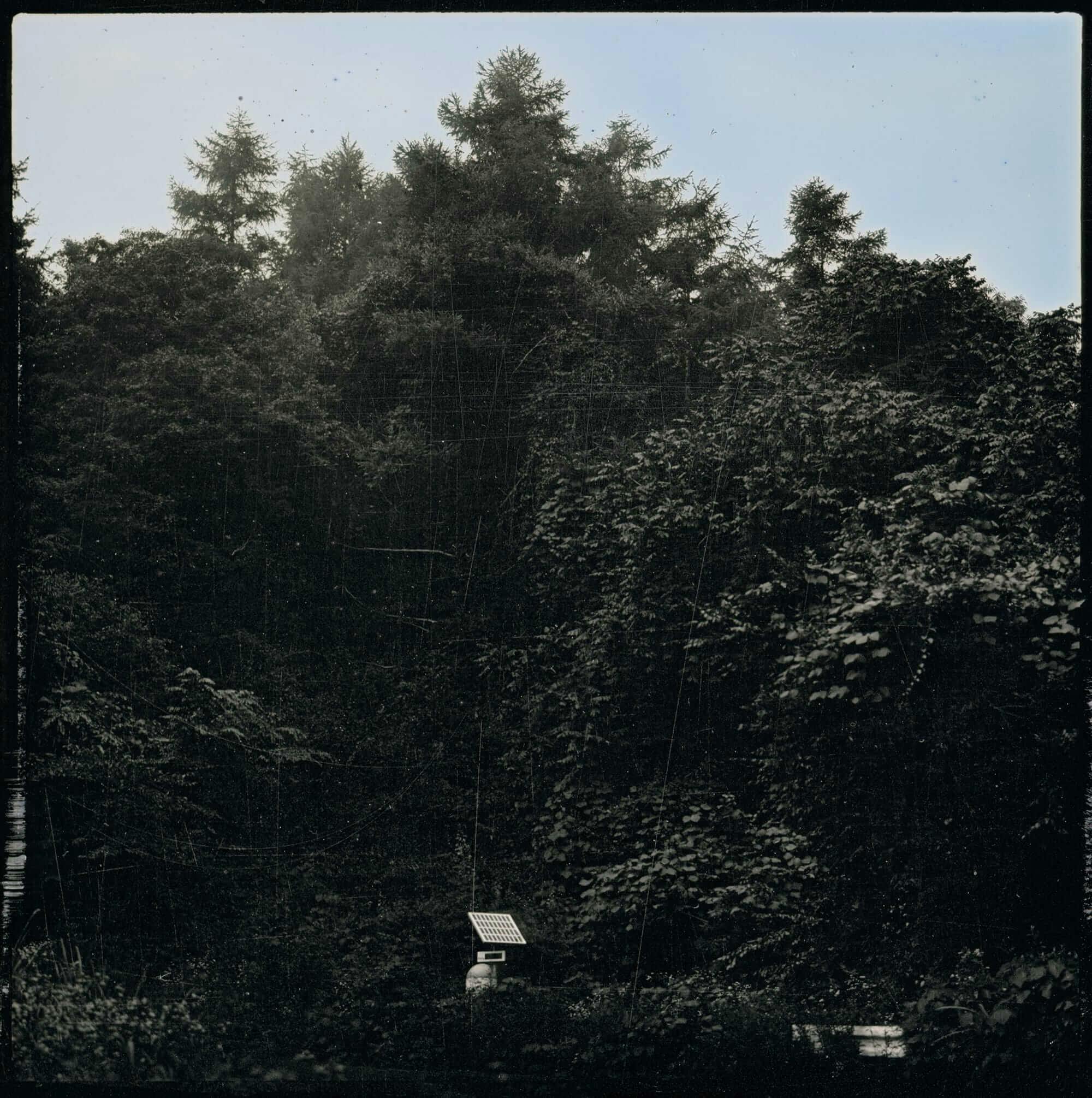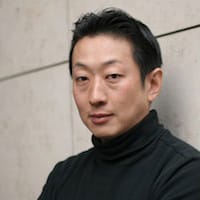Ten years in the drizzle of data
A Real-Time Dose Measurement system stands alone in the dense thicket that swallowed the artefacts, transmitting today’s spatial radiation dose data to the centre. Its sci-fi, robot-like appearance is somewhat humorous—even pathetic. The countless lines of noise that run vertically, woven by the roughness of old photo technology, are either radiation running through space or the sparse thoughts of people pouring into a land that is being forgotten.
Afternoon, 11th March 2011. Takashi Arai is preparing to photograph the “deadly ash” he has borrowed from the museum. The ash is nuclear fallout, which piled up thickly on the Lucky Dragon No. 5 (Daigo Fukuryu Maru), a fishing boat caught in the U.S. hydrogen bomb experiment in 1954—the incident that inspired the legendary movie, Godzilla. Suddenly, Arai is caught in a massive earthquake. Since then, the artist, with his excellent command of the old daguerreotype method, has been consumed with capturing nuclear issues in the 21st century through 19th-century technology.
On that same day in 2011, we were busy launching the Science Media Centre of Japan, an organisation modelled on its British counterpart and established to improve collaboration between scientists and journalists. However, the sudden devastating disaster threw us on to the frontline of the information struggle, attempting—during a time of great uncertainty—to bridge the gap between science and technology experts, both domestic and international. Ten years have since passed, and the Science Media Centre of Japan’s public activities are on hiatus. But a newsletter for science journalists continues to be written, with some 5,000 issues published during the COVID-19 pandemic.
Confronted by Arai’s work, I wonder what we have learned and what has changed during these ten years. Now and then, data continues to play with the people of Fukushima. And it is data that we continue to struggle with through the Science Media Centre of Japan’s activities. Scientific data itself is only one fact reduced to numbers. What is essentially being questioned is how we, as humans, behave in the face of such data. While I am relieved to see that, under COVID-19, values such as transparency and integrity are being emphasised in Japanese scientific culture, I also ask myself how much our efforts to communicate scientific data have contributed to healing the stigmas that remain attached to Fukushima.
Probably, as represented in Arai’s piece, the Real-Time Dose Measurement apparatus looks vulnerable and somewhat ridiculous in front of the shadowy grove. Scientific data could be rendered inept in the face of the people’s collective will. Paradoxically, however, in this world of scientific democracy, we will be unable to choose our own future without referring to the data.

